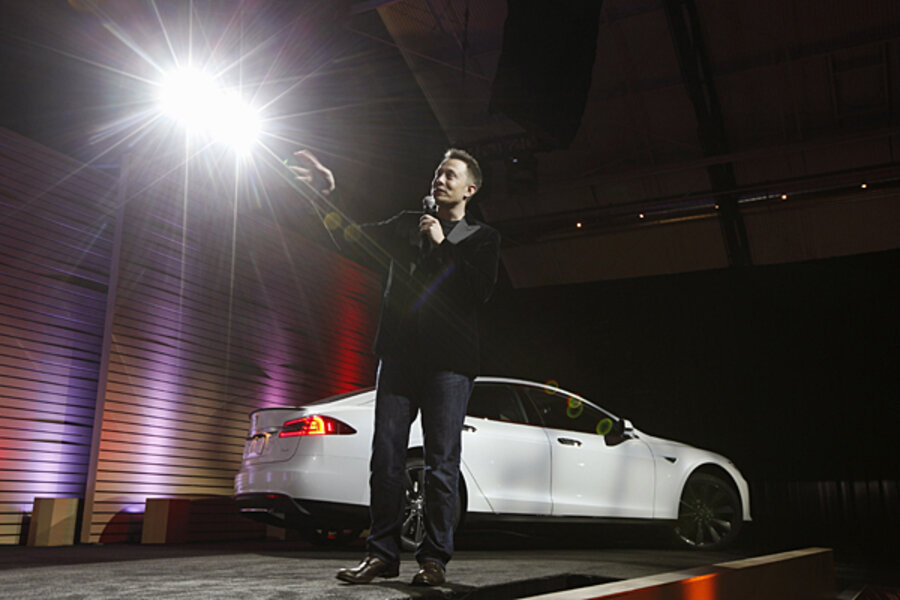Tesla: It's faster to 'recharge' electric car than pump gas
Loading...
Suddenly, the gas station looks antique.
Electric carmaker Tesla Motors debuted its much anticipated "battery-swapping" technology Thursday evening, replete with the Silicon-Valley flair we've come to expect from high-tech demos. Two Tesla Model S luxury sedans drove onto a stage at the company's design studio in Hawthorne, Calif., to be "refueled" in less time than it takes to fill up at a gas station.
The question is whether the carwash-like "Tesla stations" will work as well in the real world as they appeared onstage Thursday, and whether drivers will abandon the traditional gas station for the new, costlier technology. A transition to electrified transportation isn't going to happen overnight, if it ever happens at all, and other companies have tried and failed to implement electric battery swaps. But if seeing really is believing, then Tesla Chief Executive Elon Musk gave his detractors a lot to think about Thursday evening.
"Our goal here was to eliminate the objections people had," Mr. Musk said during the presentation. "There are some people that just – they take a lot of convincing, and so what we really want to show here is that you can actually be more convenient [in an electric car] than a gasoline car."
Channeling late-Apple-CEO Steve Jobs, Musk made a case for the future of the industry – and he did it visually.
A crowd of Tesla enthusiasts watched as a racing red Model S swapped its battery onstage, while a contrasting video showed a man refueling an Audi AG sedan at a gas station. It was a race to see who could fill up and return to the road the fastest.
The Model S rolled onstage and stopped over an elaborate trap door where an inconspicuous machine quietly exchanged the car's depleted battery for a charged one. The entire process took about 90 seconds. As the electric sedan rolled offstage, the man at the gas station remained propped up against his car waiting for the familiar click of the nozzle signifying a full tank.
"Looks like we've got some extra time," Musk said, looking up with mock impatience at the video, "so let's do another one."
In rolled a second, white Model S and the process was repeated and completed to oohs and aahs from the audience. The man at the gas station was still pumping – a process that in total took roughly four minutes.
The message was hard to miss. Instead of the electric vehicle as the slow, inconvenient outcast, the demonstration made traditional refueling look downright old-fashioned. How silly is it to have to leave your car and spend a whole four minutes pumping it full of a highly-flammable liquid in order to get on with your travels? The study in contrasts seemed to leave Musk himself speechless.
Part of that is clever marketing: the shiny red car onstage under flashy lights and thumping techno music versus the bland, monochromatic visuals of the gritty gas-station video. And it's not the first time a company has tried the idea. Electric car network operator Better Place made a big bet on battery-swapping technology, only to declare bankruptcy in May. Even Tesla has promised the feature before, only to delay its release.
That is, until now. The company plans to install the first swap stations at Tesla's busiest "Supercharger" stations in California later this year. Each unit will include 50 loaner battery packs that Tesla owners can borrow for the equivalent of what it costs to fill up a tank of gasoline. The units will cost the company about $500,000 each to install.
Musk wrapped up Thursday's demonstration with an electric car enthusiast's trademark optimism: "Hopefully, this is what convinces people finally that electric cars are the future."








